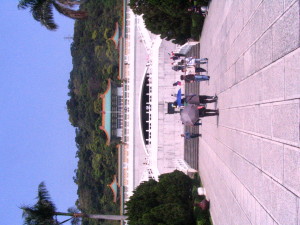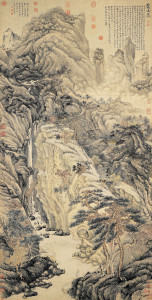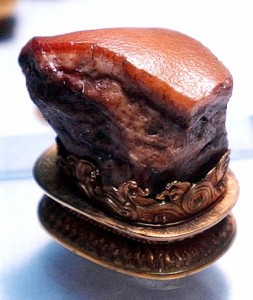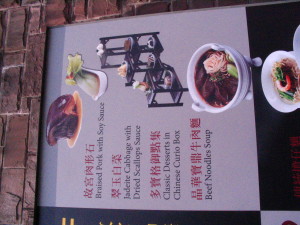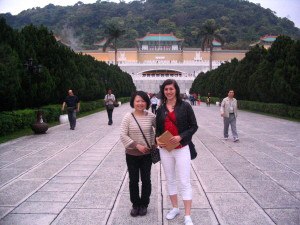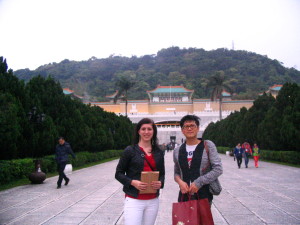 31st March
31st March  No Comments
No Comments National Palace Museum
Because the students have some exams these two days, I’m free! And also some of the teachers. Elaine wanted to take me somewhere else first, but after our conversation with teacher YiCai (arts teacher) we decided to go to National Palace Museum in Taipei. I was so excited, because teacher Yicai is very good painter too and he really understands chinese paintings and calligraphy. We arrived to the museum at about 11:30 and dear Yicai treated us for lunch first. So we went to this good restaurant directly in the complex of buildings of museum. They order me some other traditional food. First I had a rice cake with some meat, shrimp and garlic sauce, then some fried oysters (which were really delicious). Most interesting was a soup that, as I was told, is served for good luck and was made of pigs legs – so the bad luck will walk away. I had to eat the skin of the boiled pigs legs, but it wasn’t too bad (probably I’m getting used to all these weird things).
For your information the National Palace museum offers a collection of more than 650 000 pieces of ancient Chinese artifacts from different eras of Chinese history. All those treasures were originally situated in Palace Museum in Beijing, but due to the Chinese Civil War many of those artifacts were evacuated to Taiwan under the order of Chiang Kai-Shek. The building itself was built in 1960s and big vaults to store the treasures were made in the mountains that lie in the back. Many Chinese (mainlanders, how the taiwanese call them) travel here to Taipei to see their own treasures! And pay for them! And it is the truth that there were only chinese groups in the museum and only a few other foreigners…
It is a pity I couldn’t take photos inside the museum, but I hope many of those beautiful things will remain in my memories. First we went for special exhibition of Shen Zhou (1427-1509), artist from Ming Dynasty. The artists in this era were very alike our Renaissance artists – educated in many ways, like painting, calligraphy, poetry, and sometimes also medicine and fortunetelling. His works were delicate and splendid. Actually it was a real luck that we went this day, because this particular exhibition will end with this day! And I started to really like the chinese painting! There are some of his works that I have seen today (photos googled ) :
Shen Zhou’s work
one of the most famous pieces – jadeite cabbage
and pieces of pork made out of a stone – really looks tasty
and how it looks when cooked (the first two pieces)
The chinese painting is like calligraphy. You need only your brush, ink and water. But there are many ways how to make the stroke, many ways how to combine water and ink to make the strokes more or less dark and emphasize one part. When learning chinese painting, you usually start with calligraphy, continue with small paintings of bamboo and orchids. I think most astounding paintings are simple flowers and than landscapes. Paintings are usually accompanied with a poem or few words about the painting or about the feeling of the artist. When you understand the words, you can better perceive the painting and find your own hidden meaning.
Then we also saw some marvellous pieces of pottery and ceramics from different eras. Some only with simple glaze and some decorated with colours, mostly blue, but in later times also with many different colours. Last thing to see was collection of furniture and some modern works of chinese painters.
The museum will take much more than a day to see everything. Teacher Yicai tried to explain all the pieces, their composition, how they were made and also the purpose and what we can see behind the strokes, so we spend there more than 5 hours and didn’t see half of everything exhibited there.
Thank you teachers for this beautiful day, for the commentary, translation and gifts!
